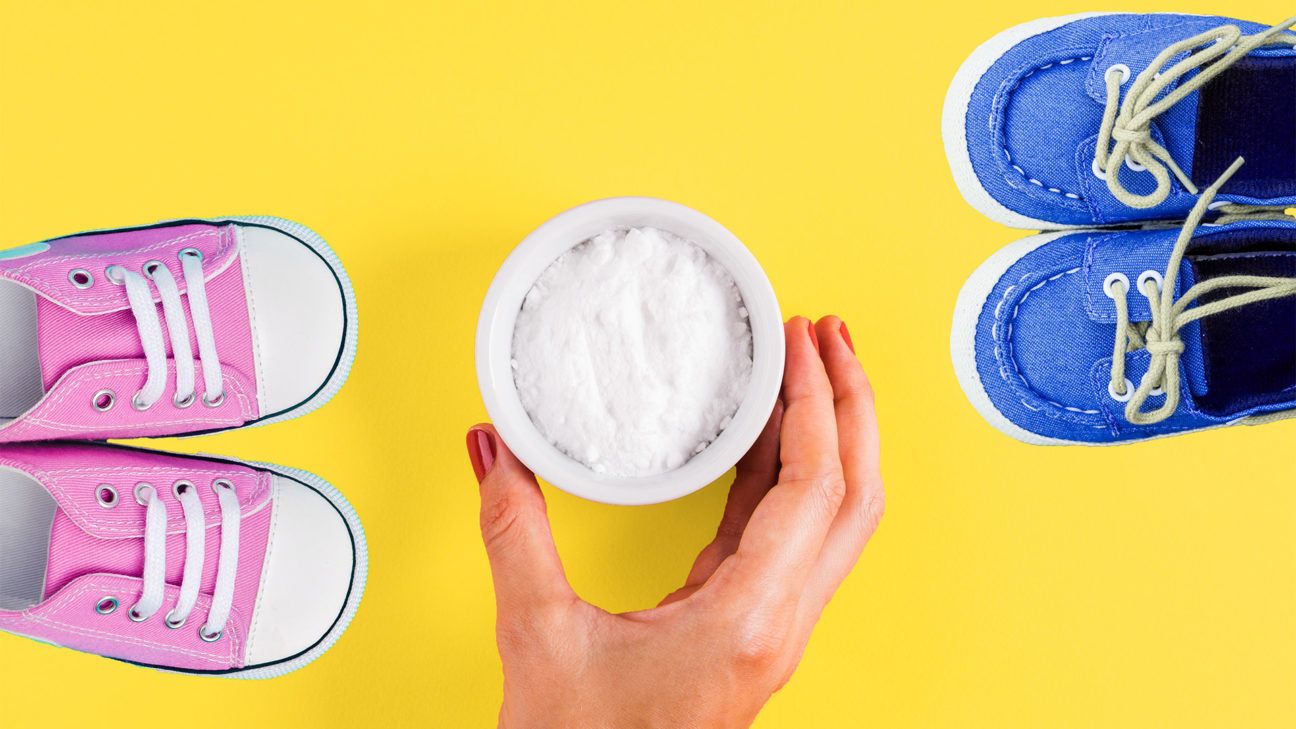When you’re pregnant, everyone and their mother has a theory about your baby’s sex. From your cravings to your skin, there are plenty of old wives’ tales that claim to know whether you’re going to be welcoming a boy or a girl.
But, is the baking soda gender test just part of the nonsense? Or can peeing on baking soda actually predict the sex of your baby? Let’s see what the science has to say.
Does the baking soda gender test work?
There’s no official research to prove the baking soda pregnancy test is accurate. It works 50 percent of the time, but there’s also a 50/50 chance for a woman to have either a boy or girl, so it’s exactly as reliable as pure chance.
The baking soda gender test is when you mix your urine with baking soda to see if there’s a reaction.
This DIY test is based on the idea that pregnancy hormones in your urine would react differently with the baking soda if you’re carrying a girl (a more acidic pH), or a boy (a more alkaline pH), but there’s no scientific evidence that this is true.
Even if it’s not scientifically backed, the baking soda urine gender test is still perfectly safe, and you can try it at home at any time during your pregnancy. All you’ll need is some baking soda, a container to put it in, a clean sample cup to catch your urine, and you’re ready to go!
Here’s how to do it:
- Put some baking soda in your baking soda container.
- Wash your hands. (Do NOT skip this step!)
- Sit on the toilet, holding the sample cup under yourself. (You might want to wear gloves.)
- Catch your pee with the cup. (You’ll want to mix equal parts urine with baking soda, so plan accordingly.)
- Wash your hands again. (You just went to the bathroom!)
- Slowly pour an equal amount of urine into the baking soda and watch for a reaction.
Keep in mind that it’s better to try the baking soda gender test first thing in the morning, as first morning urine is not as diluted as it will likely be later in the day. If you try the test after drinking water, your pee might be clearer and watered down, which can mess up the (already questionable) results.
If there’s little to no reaction: It’s (maybe) a girl!
If the urine starts bubbling or crackling in the baking soda: It’s (maybe) a boy!
Baking soda (or sodium bicarbonate) reacts to most acids, hence the fizzing effect you see when you mix your urine with the baking soda base. But does this chemical reaction say anything about your baby’s sex? Well, not really.
Your urine can be more, or less acidic, but that’s not necessarily linked to your pregnancy hormones. In reality, your urine’s acidity — and the results of your baking soda gender test — changes depending on what you eat, or drink in a particular day.
And these changes could be significant — even enough to put you at risk of infection. Science says an acidic urine might be linked with a higher chance of getting a UTI.
But there’s no science behind the accuracy of the baking soda gender test. Overall, it ends up being as accurate as tossing a coin in the air.
The baking soda gender test might not be accurate, but modern medicine does have legit methods to offer that can help you find out if you’re having a boy or a girl. Let’s see what those are, and how early in your pregnancy can they be done.
Ultrasound
An anatomy ultrasound is one the most common ways to find out the sex of a baby. Usually, you have to wait until week 20 to get this scan, but it’s likely to be worth the wait because a 2D ultrasound can be incredibly accurate.
Still, in some cases, it might be difficult to tell the sex of the baby right away. Your doctor may struggle to identify your baby’s genitalia, if for example, they’re lying in a position that makes it hard to see.
Genetic testing
Move over mom jeans — we’re looking for baby genes! Genetic testing is used to screen for potential genetic issues in your baby, but it can also reveal the sex earlier than an ultrasound would.
- DNA Blood testing can be done as early as 9 to 10 weeks into your pregnancy. It identifies sex chromosomes, which can indicate if you’re carrying a boy, or a girl.
- Amniocentesis is performed between weeks 15 and 20 and looks for anything abnormal in the chromosomes. It’s more invasive than DNA blood testing because it involves putting a needle through the abdomen. But it’s not recommended unless you’ve tested positive for abnormalities in a prenatal DNA test, or genetic conditions run in your family.
- Chorionic villus sampling (CVS) is performed between weeks 10 and 13. It works by removing a sample of placental tissue with the baby’s genetic makeup. Like amniocentesis, CVS is only recommended if a DNA test revealed abnormalities, or your family has a history of genetic issues.
The baking soda gender test is not a reliable method to figure out if you’re having a girl or a boy, but it’s a harmless way to try to guess your baby’s sex while you patiently wait for them to arrive.
If you want an accurate way to detect the sex of your baby, it’s best to go for a genetic screening test or wait until your 20 week ultrasound.

